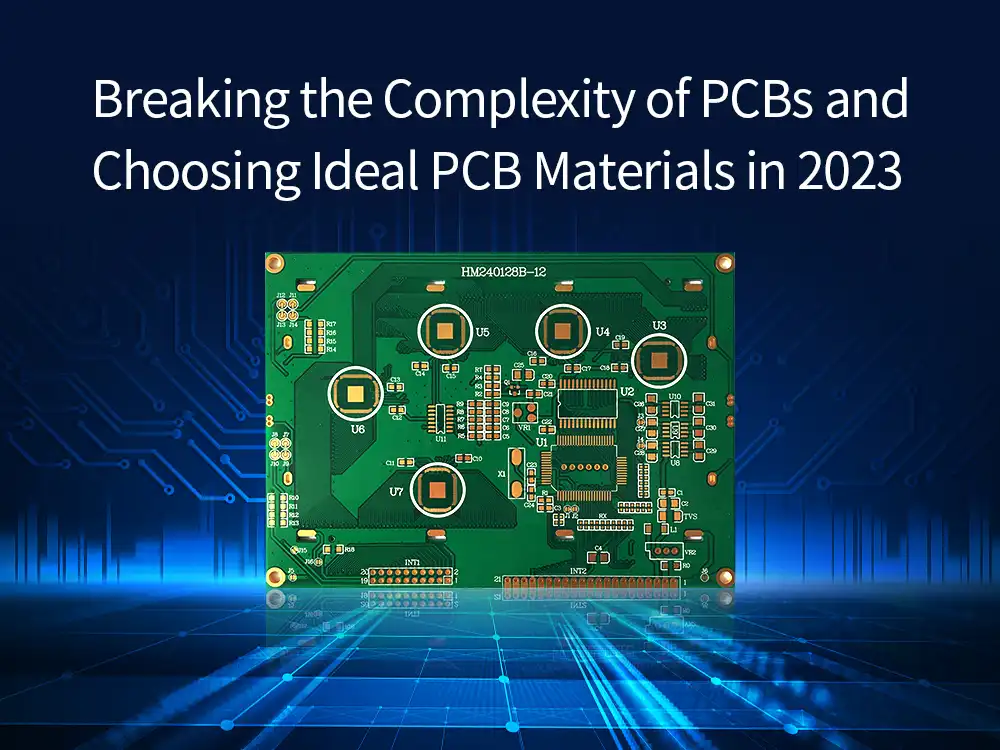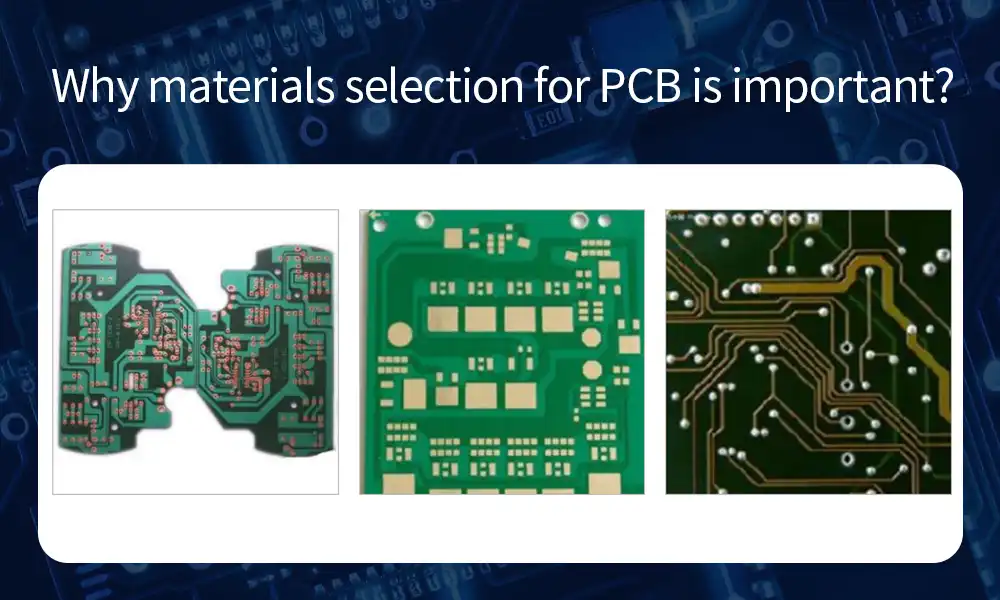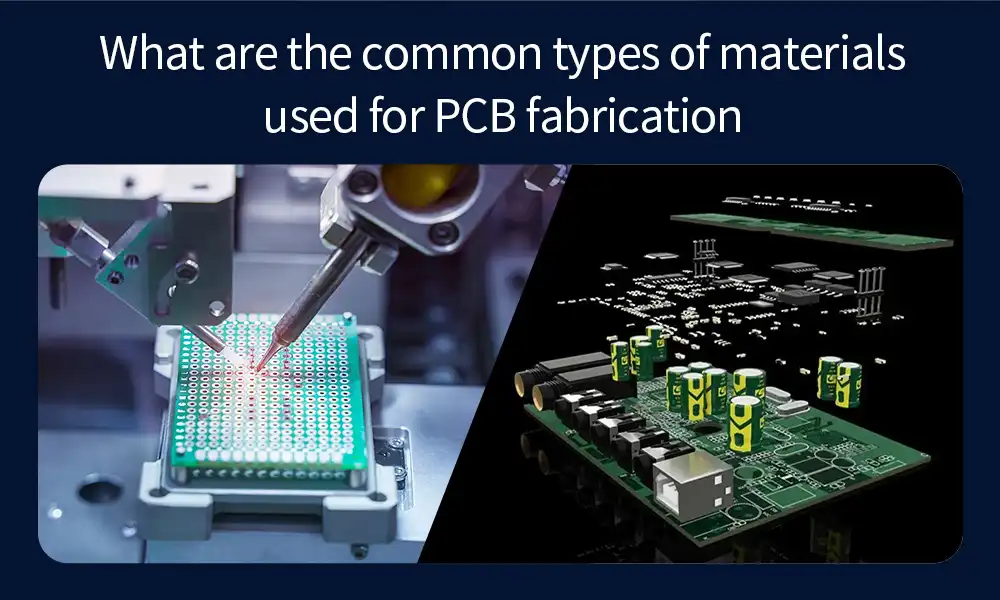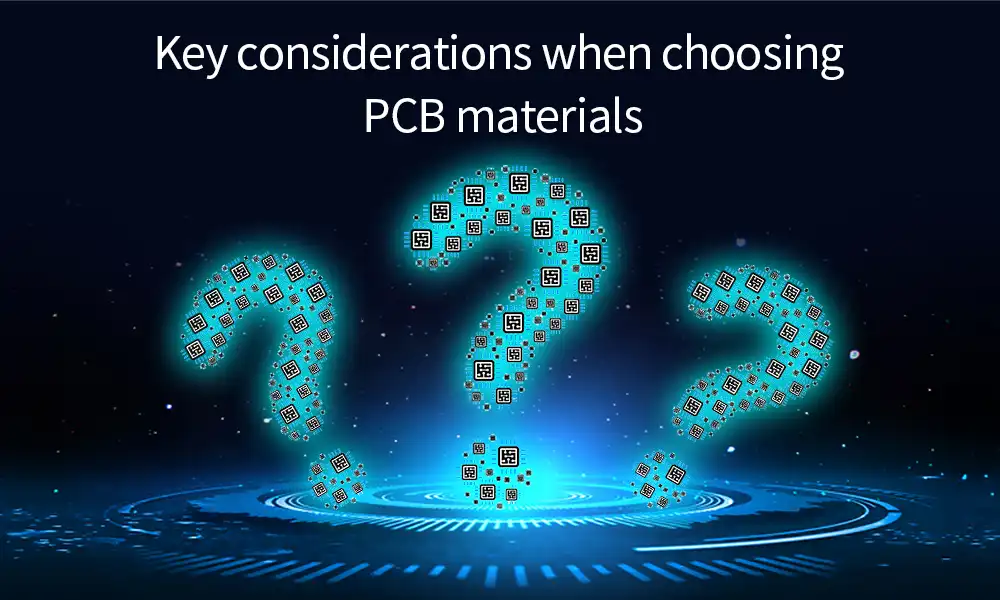
Reliable components, especially printed circuit boards (PCBs), are important for industries of all kinds. PCBs provide a platform on which electronic devices and circuits can be built that are reliable and cost-effective. They offer robust designs that allow companies to build complex systems without worrying about their components’ quality or reliability. In this article, let’s dig into a significant part of a PCB board which is PCB materials.

A standard PCB has four basic components: copper clad board, solder mask, silkscreen and component mounting holes.
With these core components in place, a functional PCB can be created for almost any kind of electronic device or system. Once all of these components have been assembled on a PCB layout software program, they are ready to be fabricated and assembled into a functional device. A thorough testing process to verify that all components are working properly must be done to ensure that the board meets performance requirements.
A typical PCB is composed of a substrate layer, which serves as the base for the board, and various components, including resistors, capacitors, transistors, integrated circuits (ICs), copper traces and vias.
The number of components on a given board will depend on its purpose. Generally speaking, more complex devices require more components. For example, modern smartphones use PCBs with hundreds of components to provide their advanced functionality.
From consumer electronics to medical equipment to aerospace applications and beyond, all industries rely on PCBs.

PCB Materials selection is critical as it affects electrical performance, product reliability, and cost. The materials used in constructing PCBs affect the signal loss and operating frequency by introducing parasitic elements such as capacitance, inductance and resistance that accumulate between two points on a circuit board.
These elements impact current to flow along the board’s conductive traces and can cause losses in power dissipation or signal attenuation. High-speed design considerations are very important when selecting the material stack-up for PCBs because different substrates have varying dielectric constants, which can increase impedance mismatch at higher frequencies.
Additionally, surface finishes used on copper traces must be carefully considered for their electrical properties, as solderability requirements and corrosion resistance are important factors to consider. By selecting the appropriate PCB materials for design and carefully controlling the fabrication process, designers can limit the signal loss and maximize the operating frequency of their products.

The choice of material for a printed circuit board (PCB) can have a significant impact on signal loss and operating frequency. The dielectric constant, dissipation factor and thickness of the PCB materials directly affect the signal transmission characteristics of a PCB. Higher permittivity and lower dissipation factor materials provide better insulation properties that reduce signal losses at higher frequencies.
Additionally, thicker boards with higher dielectric constants offer improved impedance control which increases signal integrity at high frequencies. On the other hand, thinner boards with low dielectric constants are useful for RF applications but may lead to higher signal losses at higher frequencies due to their relatively poor insulation properties.
As such, it is important for designers to choose the right combination of PCB materials to ensure the highest possible signal integrity and reduce signal losses at higher frequencies. Ultimately, by selecting the right PCB materials, one can help maintain a good relationship between signal loss and operating frequency.

The three most common materials for PCB fabrication are fiberglass, polyimide, and aluminium.

When selecting a material for a printed circuit board, several key considerations should be considered.
First and foremost, it is important to identify the application type and environment the PCB will need to operate in. Depending on the end-use requirements, different materials may offer better performance in terms of temperature tolerance, signal integrity, durability or resistance to corrosion.
In addition, factors such as power dissipation capacity, thermal conductivity, dielectric properties and cost should also be considered when choosing a material for a printed circuit board. It is also important to evaluate any potential manufacturing constraints related to the selected material during the early stages of design. These include identifying whether or not the material can be processed using standard fabrication techniques and if any special processing conditions should be followed.
Finally, it is important to consider the regulations and standards applicable to the PCB material selection process. Depending on the application, certain materials may need to meet requirements regarding flammability, toxicity or environmental impact, for example. By considering all of these factors during the design phase, PCB designers can ensure that they select a material that meets their end-use requirements and regulatory compliance needs.
Although many material options are available for HDI PCB, selecting the right materials for reliable performance and quality standards is important. The two primary considerations when selecting PCB materials for HDI designs are electrical properties and thermal and mechanical properties. For example, high-frequency materials must possess low dielectric constant and dissipation factors that can maintain signal integrity at higher frequencies.
On the other hand, thermally conductive laminates may be needed to dissipate heat efficiently from components mounted on the board surface. In terms of mechanical performance, the material should withstand any flexing or stress caused by external forces throughout its end-use environment and operating conditions.
Thus, the selection of HDI PCB materials depends on design complexity, production cost, and intended performance.
So that’s about everything you need to know about integrated circuits and how they work. We at Qtech are always ready to give you solid advice about PCBs, PCBA, and ICs. Talk to us today and find out more on what we offer. With over a decade of experience in this field, you’re guaranteed quality always.